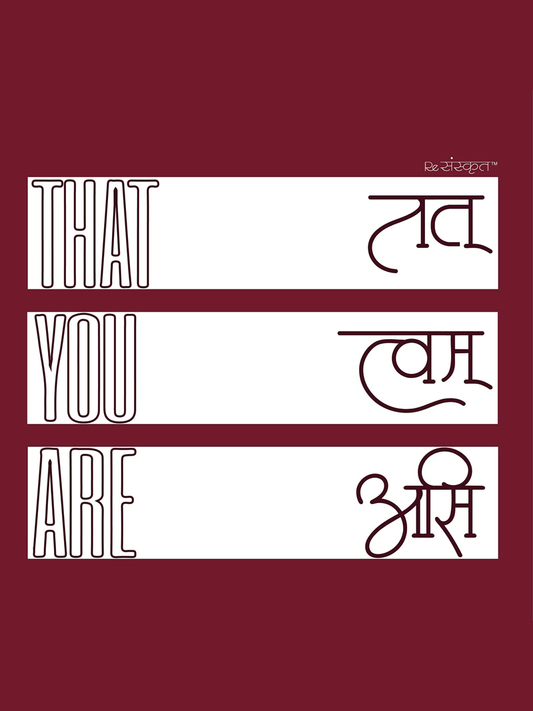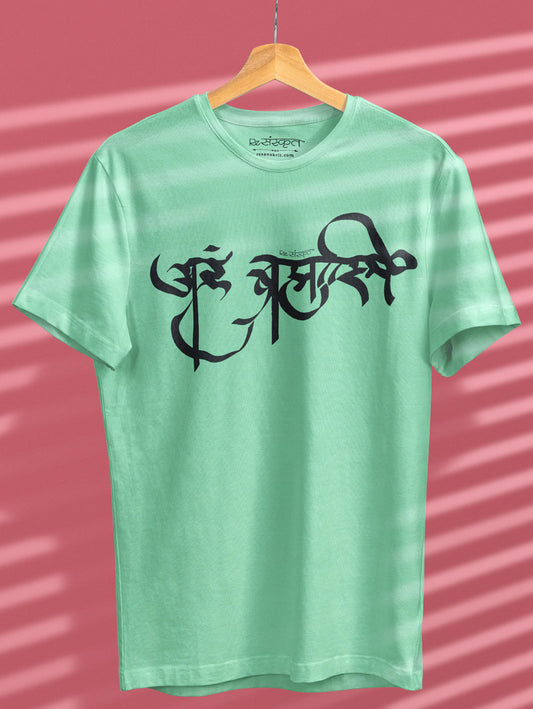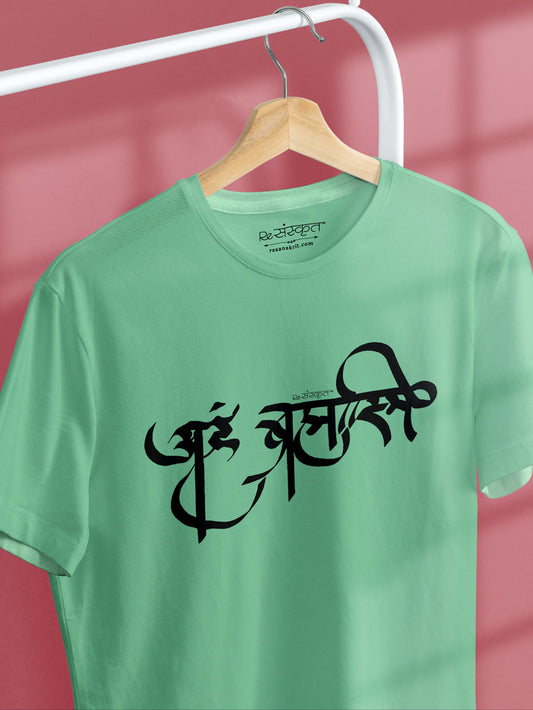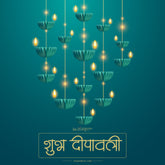Maha Mrityunjaya Mantra in Sanskrit with Meaning
Introduction
In every religion, there are some Mantras/ Incantations / Hymns / Chants that catch fancy of followers, buck every trend & fad and stick around for eons together in the absolute same pristine form, providing solace and comfort to its followers.
From Hinduism standpoint too, there are some mantras/chants which have held significant importance and considered to provide great merits to those who chant them with fervor and faith. Chief among them are
Gayatri Mantra
Maha Mrityunjaya
Mantra
Aditya Hrudayam Stotram
Vishnu Sahasranamam Stotram
Hanuman Chalisa
There is 1 common thread in these 5 mantras which is possibly the reason why people have caught on to them in greater frenzy than others. From their core intent point of view, all these hymns are aimed at addressing the most basic/carnal weak-link that drives our thoughts, words, and deeds either directly or indirectly – Fear.
From the day we are born, whatever we do is fundamentally a derivative of fear. Fear may be divided into 3 core categories –
Fear of death
Fear of losing things/ people dear to us and
Fear of failure of
any form
All efforts of man are towards conquering fear. These mantras have been powerful tools for human beings in overcoming fear.
Maha Mrityunjaya Mantra, by definition, protects us from our deepest fear – Fear of death.
Scores of articles and deliberations have been done ruminating over each word of this Mantra, but in this article, we shall aim to simplify some of the core concepts and help get a sharper perspective on “who”, “what”, “why”, “how” and “when” of this Mantra.
Meaning of Maha Mrityunjaya Mantra

ॐ त्र्यम्बकं
यजामहे
सुगन्धिं
पुष्टिवर्धनम्।
उर्वारुकमिव
बन्धनान्
मृत्योर्मुक्षीय
मामृतात् ॥
Transliteration:
oṃ
tryambakaṃ yajāmahe
sugandhiṃ
puṣṭivardhanam।
urvārukamiva
bandhanān
mṛtyormukṣīya māmṛtāt ॥
Hindi
Translation:
हम त्रिनेत्र धारी शिवकी
आराधना करते हैं, जो अपनी शक्ति से संसार का पालन
करतें हैं।
उनसे प्रार्थना है कि वे हमें जीवन व
मृत्यु के बंधन से मुक्त करे और हमें दिखा दे कि हम
कभी भी अपनी अमर प्रकृति से अलग नहीं
होते हैं॥
English
translation:
I worship that fragrant
Shiva of three eyes, the one who nourishes all
living entities.
May he help us severe our
bondage with samsara by making us realise that we
are never separated
from our immortal
nature.
Source: Maha Mrityunjaya Mantra, Rigved 7.59.12
The Genesis
Simply put, Mantras are vibrations or sound waves. Every vibration carries its own strength and depending on the place, time & circumstance.
If we were to draw a parallel to music which is also another form of vibration/sound wave, we can relate that some combinations of the waves have a deeper impact on us than others.
As much as Tansen was said to have conjured rains just by singing the Megh Raag, much as Raag Todi is played specifically on Shehnai in every single wedding to express both deep joy & deep sorrow, the consistent feeling of patriotism one always feels when listening to Raag Desh, in nearly the same way, mantras are inherent sound waves that generate unique vibrations enhancing individual and collective conscious and subconscious experience.
The Vedas extoll –
मननात् त्रायते इति मंत्रः ।
mananāt trāyate iti maṃtraḥ ।
The repetition of which
leads an individual to overcome trials/ tribulations
attain the state of
equanimity
This is the aspect which makes mantras far more
powerful than a song.
Each mantra contains the following core aspects:
1. The Inspiration – Presiding Deity
Every Mantra has a presiding deity to whom the practitioner surrenders while chanting the mantra. The presiding Deity for the Maha Mrityunjaya Mantra is the “Rudra” (the fierce form) of Shiva.
2. The Inspired – Rishi
Vedic Hymns are often referred to as “अपौरुषय” (apauruṣaya), meaning – ‘un-authored by a human’. They are said to have been transmitted as energy/vibration through contemplation and further transmitted to other humans purely via hearing. This is why Vedas are also called “श्रुति” (śruti), meaning “that which is heard.”
Keeping the hypothesis of divine intervention/communication aside, this could be possible in the exact same way gravity or any other laws of physics were understood intuitively first before bringing them to the common man through guided logic.
There are 3 interesting stories in connection with the origin of the Maha Mrityunjaya mantra.
– The most common one is
connected to Rishi
Markandeya. As a child, he was advised
to pray to Lord Shiva to prevent his premature death and
during the course of worship, Lord Shiva revealed this
mantra to him
– Another story is in relation
to Shukracharya,
the spiritual master of the demons. Lord Shiva is said
to have revealed this mantra to him
– Another
narration relates to the part of Rigveda where
a portion is said to have been composed
by Maharishi
Vashishtha and hence
attributed to him
Mantras are nothing but eternal truths which were discovered by Rishis or Sages who contemplated on specific aspects of life and living. These truths will continue to exist with or without humans or life itself in the exact same way as gravity will continue to exist with or without life.
3. The Channel – Chanda (Meter)

Do listen to the chanting along with reading the text. It will help understand the intonations. It’s a fad these days to come up with ‘versions’ along with musical instruments. Ideally, they should only be chanted in the pristine form as above and not ‘sung’.
The Power of Maha Mrityunjaya Mantra
The strength of each mantra is a derivative of 3 aspects:
Inherent strength – Inherent strength has its roots in its words, meaning, intonations, insights, and interpretations. While some mantras focus on praising a particular deity, some focus on metaphysical principles, and yet some others such as the Maha Mrityunjaya Mantra focus on enabling the Sadhak in fulfilling specific desires.
Vibrations from the individual – One can have the best of the cars but if one doesn’t know how to drive it, it is meaningless. In the same way, one can chant the most powerful of the mantras but if the inherent vibration of the individual in terms of his conviction and focus is limited, the efficacy of the mantra will be equivalently reduced.
Even if one doesn’t know driving, the vehicle can still be driven if you were to hire a driver. In the same way, the other option every individual has is to have faith in a guru who becomes a benefactor and guide-post to progressing in the spiritual path.
Vibration from the environment – Environment around us also affects the efficacy of the mantra. When we sing the national anthem alone in our room vs singing in a cricket stadium on the final match between India & Pakistan is a totally different energy field. It borders on prayer and creates a powerful energy field. Our bodies too respond differently. We need to understand this intuitive metric and the power “Sangatwam” – The power of togetherness. The more we believe it, the more it actualizes.
This is the reason why the concept of ‘Satsang’ (good company), spending time with a guru, chanting in groups is encouraged. The environment lends the energy and we in-turn purify the environment. It is cyclical.
It must be understood that a mantra is only a tool, how we use depends on us and the environment we choose.
The Maha Mrityunjaya Mantra obviously carries with it immense inherent strength but to tap that fully we need to cleanse ourselves internally and cleanse the environment around us.
The Benefits of Maha Mrityunjaya Mantra
All mantras benefit an individual at 3 levels of existence:
Sthula Shareera (Gross body) – The basic human body which is composed of 5 elements
Sukshma Shareera (Subtle body) – The mind, the heart, and the intellect
Karana Shareera (Causal body) – The awareness
Let us now take the example of The Maha Mrityunjaya Mantra, break it down and assess what the mantra could imply at various levels.

Bring this mantra home!
Buy
ReSanskrit Merchandise...
Get My Frame!
Gross body level
We all understand that the body is temporary and has to be shed one day. Hence the basic understanding of the Mantra is praying to the 3 eyed lord (who symbolizes awareness of the past, present & the future) to give us the energy to either
– Delay the decay of
the body or
–
Remove a particular
disease that ails
the body or
–
Remove a particular
disease that ails
someone else’s body
or
– Decay the
body with least
resistance or pain
(in the same way as
the cucumber falls
off the from the
stem with ease
unlike many
fruits/vegetables/
flowers which often
hang in pain till
they decay
completely)
Most people limit the extent of Sadhana to just the first phase, albeit, derive some bodily benefits out of it and pause there.
Subtle body level
One of the core principles is that of Karma and the binding cycle of birth and death until the Karmic cycle balances fully. While the gross body is bound to decay, the subtle body & the causal body continue to exist. The subtle body carries all individual “Vasanas” & “Samskars” (All karmic assets & liabilities accumulated over lifetimes)
Hence birth & death are taken as 2 sides of the same coin with neither being an imposter nor a benefactor. Praying for maintenance of a body in effect can be considered the lowest category. What is hence taken as a deeper consequence is how to cleanse our subtle body.
On contemplation of this aspect, the Maha Mrityunjaya Mantra takes a wholly different meaning. What is death after all? The body anyway has to fade away. What continues to remain in every single lifetime are the same issues:
– Fear
of
death
–
Constant
state of
discontentment
and
simmering
insecurities
–
Fear of
losses
and
being
unable
to
retain
gains
–
Frightening
fragility
of
praise
and
blame
–
Attachment
to
temporal
things
as
though
they are
going to
be
permanent
–
Lust,
Jealousy,
Greed,
etc.
–
Un-ending
cycle of
desires
What are these, if not forms of death itself? Every single day we sink ourselves in these forms of decay, not in the gross body but in the subtle body. Healthy mind and intellect are critical to optimal functioning as human beings.
Our thoughts define our being and the vibes we carry. The body is only an instrument of the Mind, Heart & the intellect. It does its bidding.
The great story of Markandeya symbolizes victory over the fear of death through complete surrender to the Deity. The Maha Mrityunjaya Mantra is an exceptionally powerful tool in helping us develop our subtle faculties thereby maximizing our potential as human beings.
The name of the Mantra translates to “The Great Victory over the Great Death”. The Mantra goes beyond just the temporary. Once we consider ourselves as one with the Lord (in the same way as Markandeya), we automatically become Mrityunjaya – Victorious over death.
We will talk about Kaarana Shareera (Causal Body) in the next section.
Leveraging Power of The Maha Mrityunjaya Mantra
The scriptures prescribe the following 3 step process to maximize the potential of a mantra-
Stage 1 – Shravanam (Listening and internalizing)
Stage 2 – Mananam (Believing, repeating it regularly and contemplating its meaning)
Stage 3 – Nididhyasanam (Meditating on its essence and internalizing it such that it becomes as part of our very system and spontaneous/natural part of our being)
Let’s take up each of these steps in a little more detail. We will take the analogy of an individual settling himself in a new organization.
Stage 1 – Shravanam – “You are in the System”
Whenever an individual joins an organization, he/she needs to focus on 3 key aspects:
– Understanding the
people, culture, and
processes
–
Setting your core
objectives and align
with your
counselors/ mentors
in terms of
expectations
Training & development around technical skills that need to be augmented to enable efficient delivery of results
To perform optimally, one has to without fail to ensure that the above 3 are managed appropriately else the corporate journey may not be as fruitful as envisaged.
In the exact same manner as mentioned above, the first stage that a Sadhaka goes through is “Shravanam”. As mentioned before, Vedas are also called as “श्रुति”, implying the significant focus on hearing and internalizing. Facets of Shravanam include –
– Focussed listening
of the mantra to
internalize and
perfect the chanting
accurately
–
Clear understanding
of the literal
meaning of the
mantra
–
Disciplined approach
to
time/place/circumstance/
time period during
which the mantra
would bechanted on a
regular basis.
–
Targeted internal
focus on the Deity
when chanting the
mantra
Various practitioners recommend steps to ensure optimization of stage 1 including
– Setting specific
time and place to
chant the
mantra
– Setting
a specific duration
to do the
mantra
– Using
instruments such as
prayer beads etc. to
enable counts and
focus
– Periodic
Satsang with people
of similar mindset
and spiritual
practices
Stage 2 – Mananam – “The System is in You”
The best example to help understand this phase is the point when an individual internalizes a particular habit – say going to a gym or a embedding a fitness regime in the daily routine. From that point on, there is a sense of discomfort when the individual does ‘not’ do the activity. It becomes internalized when one starts seeing the benefits of the discipline materialize in daily life. For example, weight loss, gain in body mass, recognition, and appreciation at work, etc.
In the same way, a disciplined approach to a mantra or a “Sadhana” with dedication leads to specific benefits such as:
– Improvement in the
stability of the
mind and
breathing
–
Increased focus
–
Greater calmness
It is in this phase that the individual must dedicate time to internalizing and contemplating the deeper meaning of the mantra and what the mantra is trying to teach us. The beauty of The Vedas is the fact that they provide through symbols, directions to the Sadhak and rely heavily on the extent to which he/she spends energy in contemplating greater truths.
Stage 3 – Nididhyasanam – “You are the System”
This is the stage where the essence of the mantra starts becoming a part of you and your DNA. It’s like learning to ride a cycle. Once you have learned it fully, you don’t need to think about how to pedal, how to balance, etc. It becomes a part of you and your personality.
At this stage, you do not need to chant the mantra. The mantra drops off your personality like a cucumber automatically falling off the stem when it’s ripe! Just by contemplation, the gross and the subtle bodies are still and quietened into the meditative silence sinking slowly into the Kaarana Shareera, the state of pure awareness.

Bring this Stotram home!
Buy
ReSanskrit Merchandise...
Get My Frame!
Brief note on the Causal Body –
The causal body in simple terms is “Awareness of I”. While this is an independent topic on its own, the summary is this – the root of our existence / premise rests on the basic awareness of “I”. Without the first person there can be no second or third person.
Every time we wake up from sleep, sub-consciously, the first identification is the awareness that we exist. When the mind is still like a placid lake, with no thoughts, the breath takes a pause and at that moment, what remains is just pure awareness.
The whole of the Upanishads have gone into great depths to elaborate on this concept. This would probably be treated a separate topic at a later point.
At this stage, what mantra an individual has contemplated upon in the past becomes irrelevant. Awareness of oneness with the universe takes the centre stage. This is the greatest fruit of the Mantra. The death of all vasanas, shedding away all thoughts and directing towards the silence which unites us with the universe and makes us immortal for we are not anymore bound by body and mind.
This is the greatest gift the mantra can bestow on anyone. The power to direct the mind and the body to silence at will. At this stage all our cognitive and intuitive skills peak.
Conclusion
Sources & References
1. Talks
on Maha
Mrityunjaya
Mantra –
by Swami
Chinmayananda
&
Swami
Swaroopananda
2.
Veda
Pushpanjali
– SSS
Book
Trust

![[PREORDER] 2026 Hindu Desk Calendar - Sanskrit Shlokas, Art & Tithis - ReSanskrit®](http://resanskrit.myshopify.com/cdn/shop/files/2026_desk_hero_front_533x.jpg?v=1762577869)
![[PREORDER] 2026 Hindu Desk Calendar - Sanskrit Shlokas, Art & Tithis - ReSanskrit®](http://resanskrit.myshopify.com/cdn/shop/files/2026_desk_lifestyle_2_533x.jpg?v=1762577869)
![🆕 [PREORDER] 2026 Hindu Wall Calendar - Sanskrit Quotes, Indian Art & Festivals (Vikram Samvat) - ReSanskrit®](http://resanskrit.myshopify.com/cdn/shop/files/Wall_cover_hero_2026_533x.jpg?v=1762527319)
![🆕 [PREORDER] 2026 Hindu Wall Calendar - Sanskrit Quotes, Indian Art & Festivals (Vikram Samvat) - ReSanskrit®](http://resanskrit.myshopify.com/cdn/shop/files/Wall_fullpage_month_2_2026_533x.jpg?v=1762528373)
![[New Edition] ReSanskrit® 365 Days of Sanskrit Wisdom | Daily Sanskrit Quotes | With 100+ New Quotes, Hindi & English Translations🆕](http://resanskrit.myshopify.com/cdn/shop/files/365-calendar-resanskrit-front-hero-shot_533x.jpg?v=1762351171)
![[New Edition] ReSanskrit® 365 Days of Sanskrit Wisdom | Daily Sanskrit Quotes | With 100+ New Quotes, Hindi & English Translations🆕](http://resanskrit.myshopify.com/cdn/shop/files/365-calendar-resanskrit-quote-shot1_533x.jpg?v=1762351193)









![[Part 2] Relevant Sanskrit Shlokas with Meaning in Hindi & English](http://resanskrit.myshopify.com/cdn/shop/articles/Relevant-Sanskrit-Shlokas-Article-Cover-image-part-2_8341afb2-9a7c-4b8c-90fa-eb4000af852f_165x.jpg?v=1762527855)


22 Comments
Amazing clarity!
Amazing clarity!
Leave a comment
Please note, comments need to be approved before they are published.